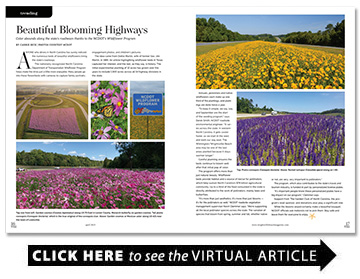Beautiful Blooming Highways
Color abounds along the state’s roadways thanks to the NCDOT’s Wildflower Program
BY Carrie Seck
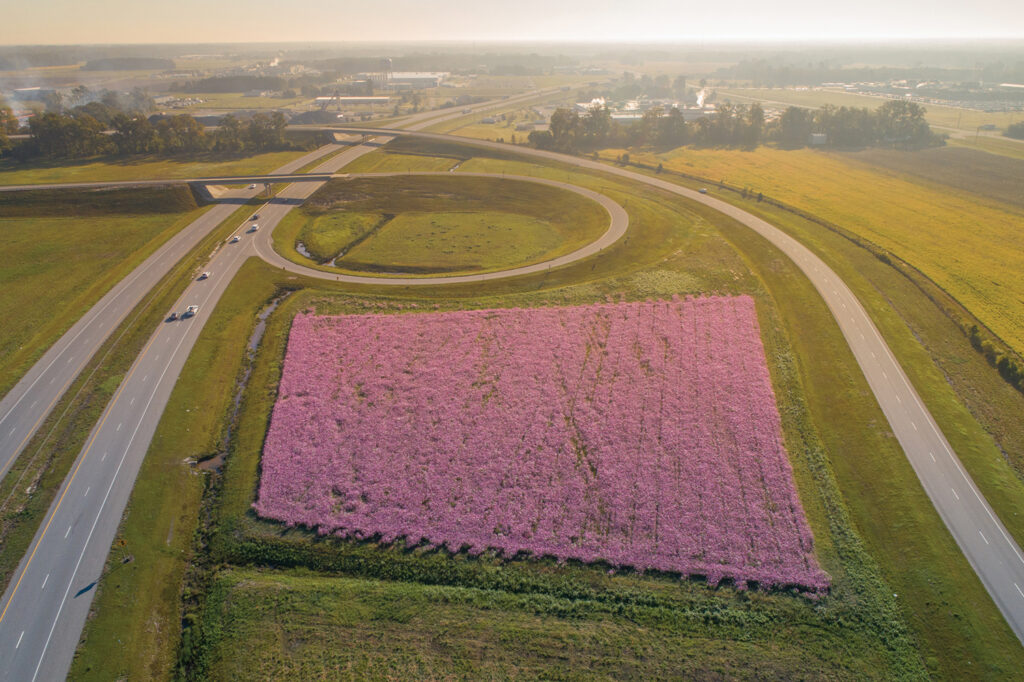
Anyone who drives in North Carolina has surely noticed the numerous beds of beautiful wildflowers lining the state’s roadways.
The nationally recognized North Carolina Department of Transportation Wildflower Program helps make the drive just a little more enjoyable. Many people go into these flowerbeds with cameras to capture family portraits, engagement photos, and children’s pictures.
The idea came from Dottie Martin, wife of former Gov. Jim Martin, in 1985. An article highlighting wildflower beds in Texas captured her interest, and the rest, as they say, is history. The initial experimental planting of 12 acres has grown over the years to include 1,500 acres across all 14 highway divisions in the state.
Annuals, perennials and native wildflowers each make up one third of the plantings, and plantings are done twice a year.
“To keep it simple, we say July and September are the start of the seeding program,” says Derek Smith, NCDOT roadside environmental engineer. “It varies across the state. In western North Carolina, it gets cooler faster, so we start in the west and work our way east. The Wilmington/Wrightsville Beach area may be one of the last areas planted because it stays warmer longer.”
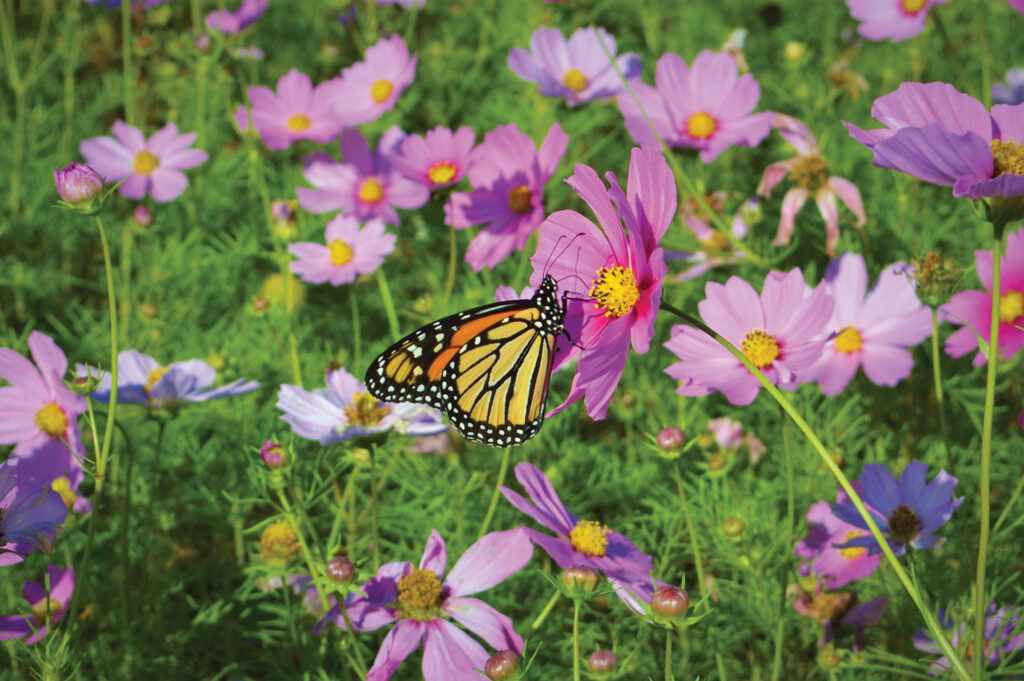
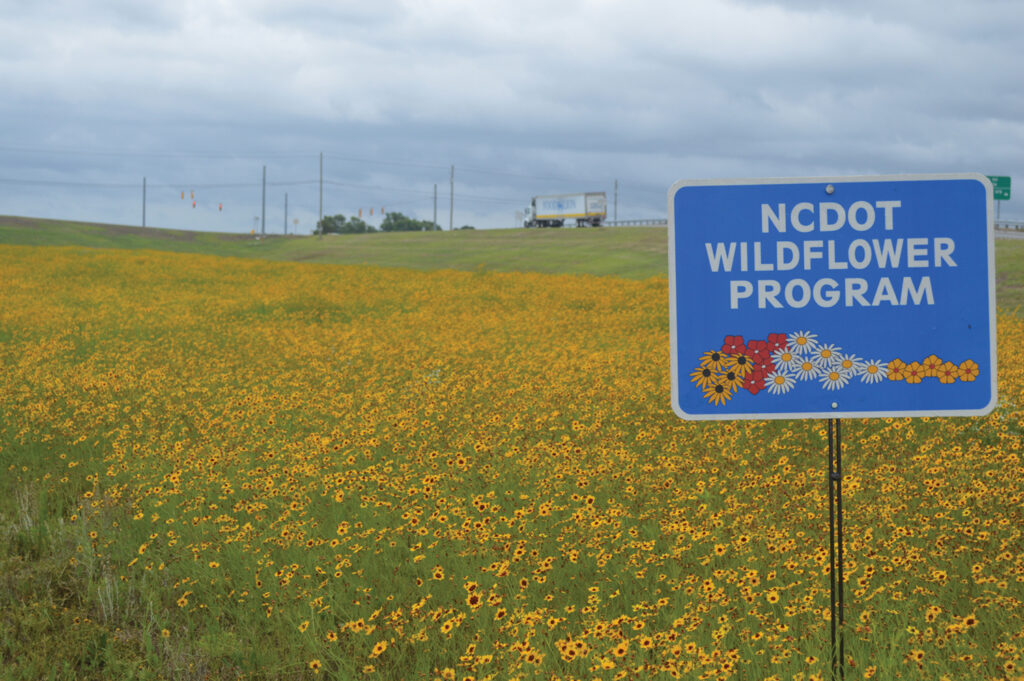
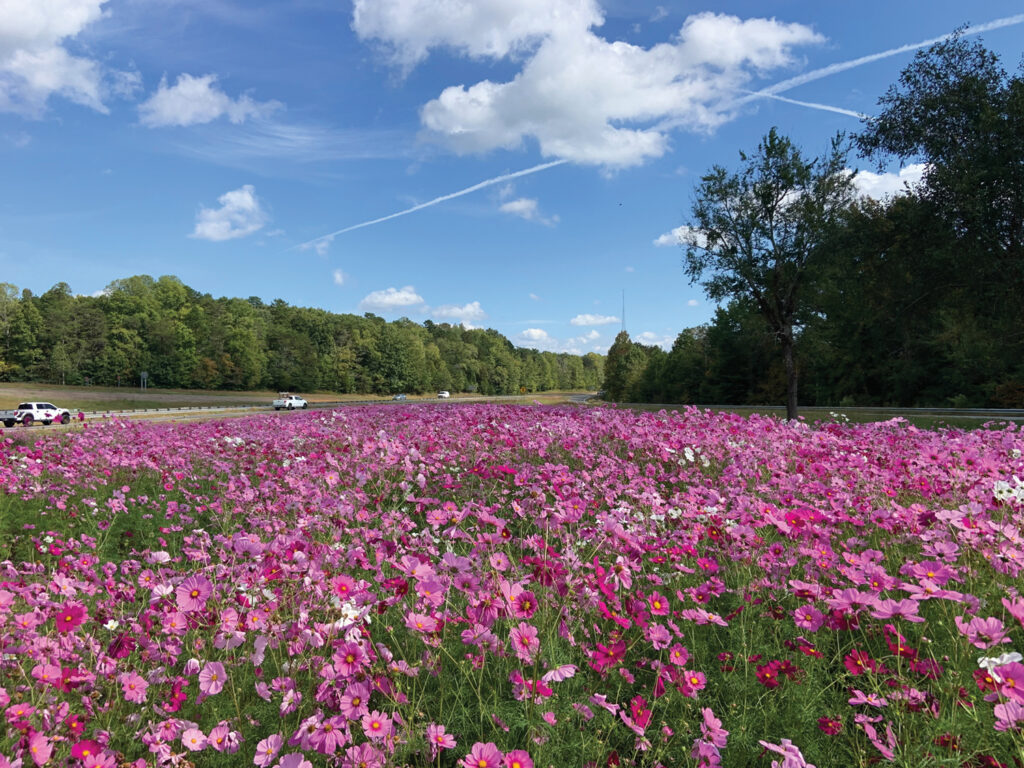
Careful planning ensures the beds continue to bloom well after that initial pop of color.
The program offers more than just natural beauty. Wildflower beds provide habitat and a source of nectar for pollinators, which help sustain North Carolina’s $78 billion agricultural community. Up to a third of the food consumed in the state is directly attributed to the work of pollinators, mainly bees and butterflies.
“It’s more than just aesthetics, it’s more than just blooms — it’s for the pollinators as well,” NCDOT roadside vegetation management supervisor Kevin Clemmer says. “We’re supporting all the local pollinator species across the state. The variation of species that bloom from spring, summer and fall, whether native or not, are very, very important to pollinators.”
The program, which also contributes to the state’s travel and tourism industry, is funded in part by personalized license plates.
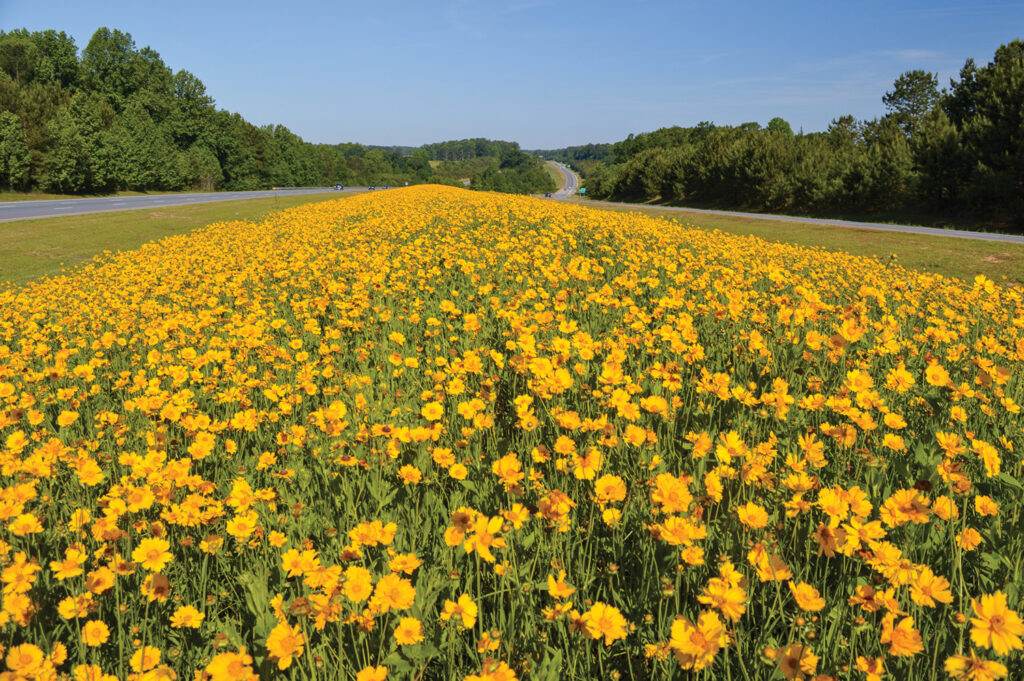
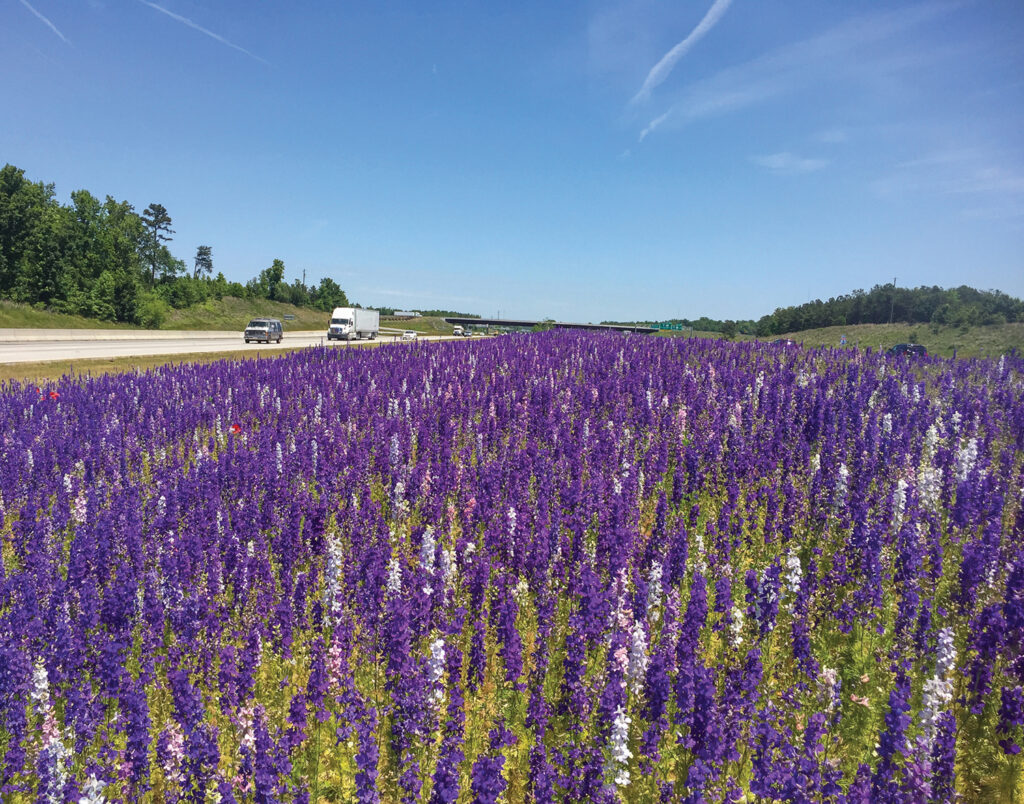
“It’s important people know these personalized plates have a big impact on our program,” Clemmer says.
Support from The Garden Club of North Carolina, the program’s lead sponsor, and donations also play a significant role.
While the blooms would certainly make a beautiful bouquet, NCDOT officials ask motorists not to pick them. Stay safe and leave them for everyone to enjoy.
